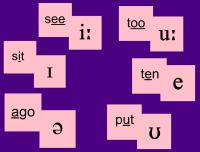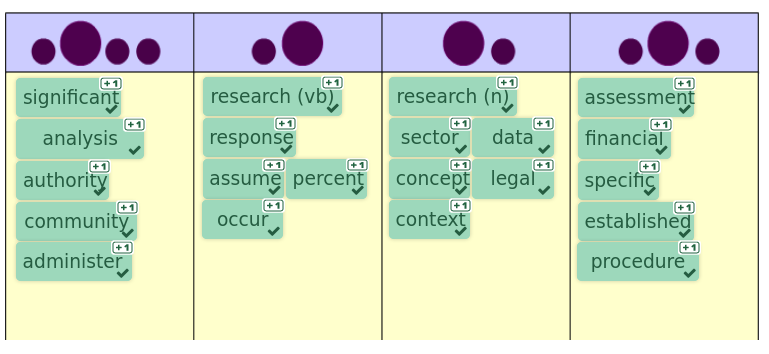Pronunciation

Introduction
If your first language is not English, you may have difficulty with some of the individual sounds of English, or perhaps when certain sounds are combined together they may be difficult to say. It is not necessary for you to sound like a native speaker (unless you want to be a spy!). After all, a Scottish person or a South African or a person from Manchester may have a strong accent. So, it is not a problem to speak with a Spanish or Chinese or Korean accent, either.
However, when people have problems understanding you because of pronunciation problems, then it is probably a good idea to practise in order to improve your pronunciation of the sounds that are the source of the confusion. In addition, English, unlike many other languages, has a very irregular pronunciation: it is not always possible to know how a word is pronounced from its spelling, or how it is spelt from its pronunciation. So, all good dictionaries contain the phonemic transcription of words. If you know the phonemic chart, you can be a more independent learner. You will not need to ask native speakers, “How do I say this word?”
Objectives
- To help you to become more familiar with the phonemic script, and thus help you understand phonemic transcription in dictionaries
- To help you correctly pronounce words frequently used in academic English, by focusing on their pronunciation
- To raise awareness of different stress patterns of individual words in the Academic Word List
Activity 1: The Phonemic Chart
You may already know the phonemic chart and the sounds that the symbols represent. If you do not, or are unsure, watch the video below to hear the symbols and representative words pronounced.
Then follow this link Test Your Memory of the Symbols to see how much you can remember.
Then follow this link Phonemic Script Pronunciation Practice to listen to some of the sounds again then record yourself and compare your pronunciation to the model.
Instruction
In this activity you are going to drag and drop some short words to columns with the vowel sound they contain written in phonemic script. All the words come from The Academic Word List. Before starting the activity read about this list below:
Until recently, those working with students keen to improve their academic vocabulary were obliged to follow their instinct as to which words were ‘academic’ and which were not. However, in the year 2000, Dr. Averil Coxhead at the Victoria University of Wellington in New Zealand used computer corpora to scientifically establish for the first time the highest frequency vocabulary used in an academic context. Through analysis of 3,500,000 words of text, from a variety of different disciplines and utilising a number of different genres, the Academic Word List was created. It excludes the 2000 highest frequency words used in English (the General Service List) and technical words specific to the disciplines, but it nonetheless represents an invaluable resource for all those wishing to expand their academic vocabulary, especially those students for whom English is an additional language. The list comprises 570 word families and is organised into ten sublists with the words in Sublist 1 being the most frequent, Sublist 2 the next most frequent and so on. If you need to check the meaning of any
of these words follow this link Cambridge Dictionary Online (opens in new tab)
Activity 2: Stress patterns in words
As well as being able to pronounce the individual sounds within a word, it is also important to know which syllable in the word to place the stress on, if you are to be understood. The next exercise shows you different stress patterns and again uses words from The Academic Word List.
Instruction
In this activity you are going to drag and drop some words to columns to group the words according to their stress patterns. All the words come from The Academic Word List.
Activity 3: Useful expressions for seminars
These expressions come from another Learning Object on Academic English Online called Contributing in Seminars. If you like, you can listen to the discussion on that Learning Object to hear them used in context.
Instruction
Follow this link Useful Expressions for Seminars in Phonemics to a series of six exercises in which you have to put the mixed up expressions, which may be useful in seminar discussions, in the correct order. The phrases are all written in phonemic script.
Finally, in the box below write your answers to the following questions. Are you happy with your pronunciation in English? Which sounds are difficult for speakers of your language? Do you want to improve your accent? If so, how are you intending to do this?
Would you like to review the main points?
© William Tweddle, Queen Mary, University of London, 2010, image created by the author using a Smartboard and Jing
